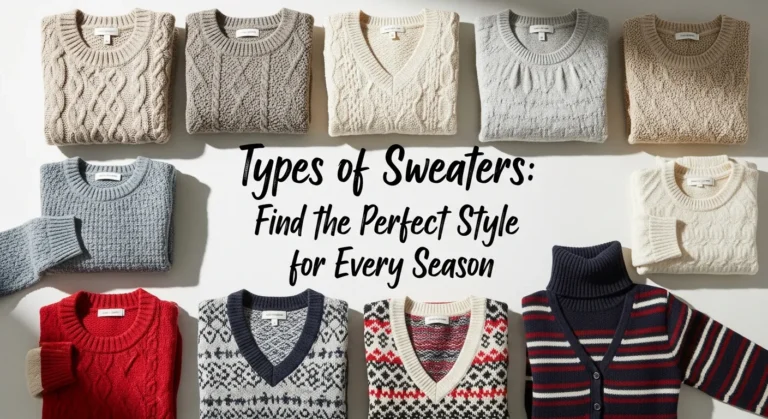A Step-by-Step Guide to Sustainable Packaging for Clothing
Switching to sustainable packaging for clothing is a smart way for brands to reduce waste and lower their environmental impact. It goes beyond using eco-friendly materials; it helps decrease carbon footprints and supports responsible sourcing. Choosing the right eco solutions can save costs while enhancing a brand’s reputation among customers who care about the planet.

Many companies now use recycled cardboard, biodegradable plastics, and compostable mailers to package clothing. These options break down naturally or can be reused, reducing landfill waste. Adopting these green packaging methods is key for fashion brands wanting to meet new environmental standards and consumer expectations.
Sustainable packaging also offers creative opportunities for brands to customize their packaging in ways that stand out. This helps build loyalty with eco-conscious shoppers and shows a commitment to sustainability.
Key Takeaways
- Sustainable packaging cuts waste and lowers environmental harm.
- Eco materials like recycled and biodegradable options are popular choices.
- Green packaging improves brand image and connects with responsible consumers.
What Is Sustainable Packaging for Clothing?

Sustainable packaging for clothing focuses on using materials and designs that reduce harm to the environment. It aims to limit waste and pollution while supporting brand values. Understanding its definition, importance, and impact helps clarify why many fashion brands are switching to greener options.
Definition and Core Principles
Sustainable packaging refers to packaging made from eco-friendly materials that can be recycled, reused, or naturally break down. The core principles include reducing waste, using renewable resources, and designing for minimal environmental impact. Brands often choose recycled cardboard, biodegradable plastics, or compostable materials for their packaging.
This approach also involves lowering energy use during production and encouraging customers to recycle or repurpose packaging. The goal is to create packaging that meets business needs without adding to pollution or landfill waste, supporting a circular economy in fashion.
Why Sustainability Matters in Fashion Packaging
Clothing brands face pressure to reduce their environmental footprint. Sustainable packaging helps by cutting waste and conserving resources. With consumers growing more eco-conscious, using green packaging can improve a brand’s reputation and customer loyalty.
Sustainability also reduces costs in the long term. For example, lighter and recyclable materials lower shipping expenses and waste management fees. Adopting sustainable packaging can position a brand as responsible and forward-thinking, which supports broader industry goals around climate change and resource conservation.
Environmental Impact of Conventional Packaging
Traditional packaging often uses plastic, polybags, and non-recyclable materials. These items frequently end up in landfills or oceans, causing pollution that harms wildlife and ecosystems. Plastic can take hundreds of years to degrade and releases toxic chemicals as it breaks down.
Moreover, producing conventional packaging usually consumes significant energy and generates greenhouse gases. This contributes to air pollution and climate change. Switching to sustainable alternatives helps reduce these impacts by using materials that are renewable and easier to recycle or compost.
Top Eco-Friendly Packaging Materials
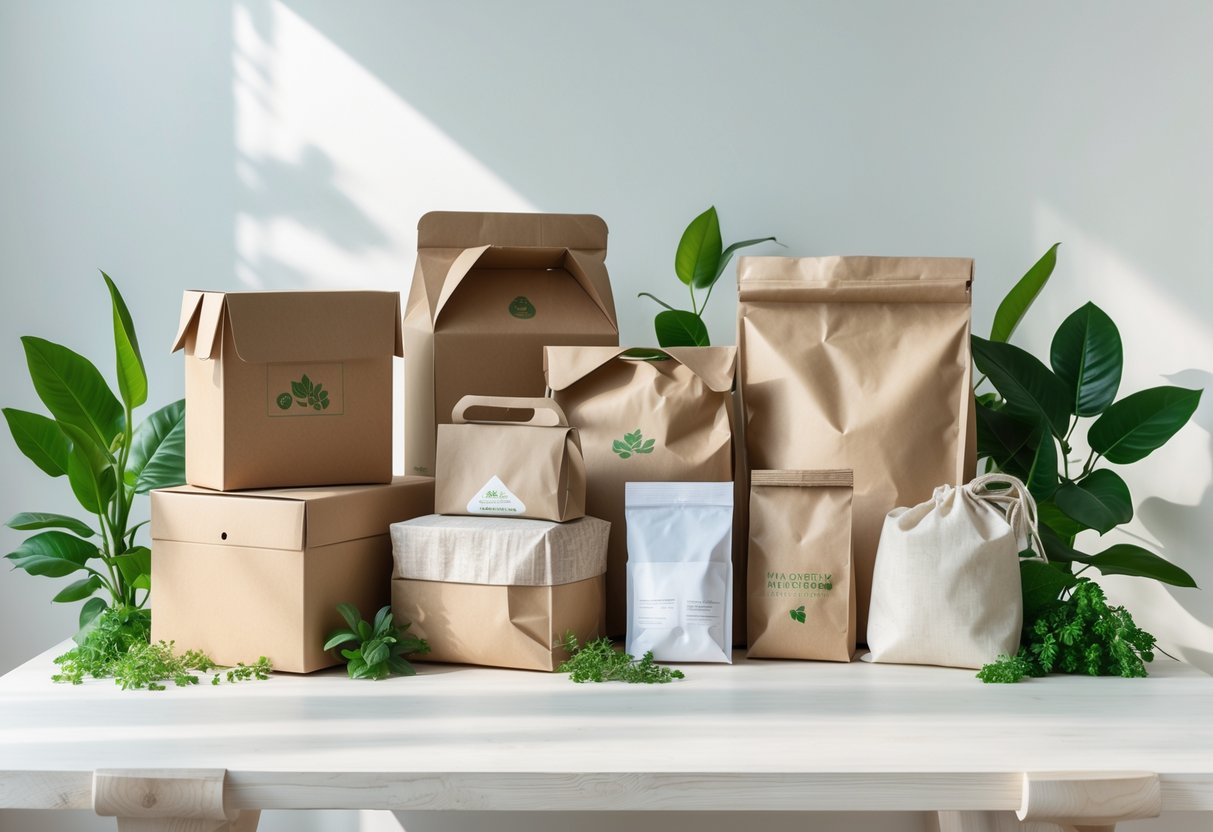
Choosing the right materials helps brands reduce waste and lower their impact on the environment. Some options focus on recycling and reusing, while others break down easily or come from renewable sources. Many of these materials also support brand image by showcasing sustainability.
Recycled and Recyclable Paper Options
Recycled paper packaging is made from used paper that is processed and reused. It reduces the need for new raw materials and helps cut down on landfill waste. Brands often use recycled cardboard boxes, mailers, and paper wrap for clothing.
This packaging is widely accepted in recycling programs, making it a practical choice. It can often be printed with eco-friendly inks to keep the entire package sustainable. Recyclable paper options provide a balance of cost-effectiveness, durability, and environmental benefit.
Biodegradable and Compostable Alternatives
Biodegradable packaging materials break down naturally through exposure to microorganisms. Compostable options go further, turning into nutrient-rich compost in controlled environments.
Common materials include biodegradable plastics made from plant starches and compostable bags. These options reduce long-term pollution and are useful for brands wanting to avoid traditional plastic. However, they need proper disposal methods to break down fully.
Plant-Based and Renewable Materials
Packaging made from plants uses renewable resources like cornstarch, sugarcane, or mushrooms. These materials reduce reliance on fossil fuels and offer a lower carbon footprint during production.
Examples include bioplastics and packaging molded from agricultural waste. They can be designed for strength and flexibility, making them suitable for protecting apparel during shipping. Using plant-based materials shows a brand’s commitment to sustainability through innovation.
Reusable Fabric and Cotton Bags
Reusable bags made from fabrics like cotton, jute, or canvas offer a durable alternative to single-use packaging. They encourage customers to reuse the packaging multiple times, cutting down on waste significantly.
These bags can be branded and styled to add value and appeal. Cotton bags often use organic or recycled fibers to improve sustainability. While the upfront cost is higher, reusable bags provide long-term eco benefits and help promote brand loyalty.
Innovative Packaging Solutions in the Apparel Industry

The apparel industry is adopting new packaging ideas that reduce waste and improve sustainability. These solutions focus on cutting excess materials, using unique biodegradable options, and creating systems that allow packaging to be reused or recycled to save resources.
Minimalist and Reduced Packaging Design
Many brands now use minimalist design to cut down on materials. This approach removes unnecessary elements like extra boxes, plastic wraps, and inserts. It helps reduce waste and lowers costs.
Minimalist packaging often uses lightweight, recyclable materials like thin cardboard or paper. These choices simplify shipping and storage, reducing carbon emissions during transport.
Designers focus on neat, simple packaging shapes that protect clothes without added bulk. The goal is to keep the package functional while using the least amount of material possible. This helps brands show commitment to eco-friendly practices.
Edible and Water-Soluble Packaging
Some companies explore edible and water-soluble packaging as new green options. Edible packaging is made from natural ingredients like starch or seaweed. It breaks down safely if discarded or can sometimes be consumed.
Water-soluble packaging dissolves in water without leaving harmful residues. It is useful for items that arrive wet or need moisture protection but want to avoid plastic pollution.
These innovative materials offer a biodegradable alternative to plastics while adding unique features. However, they are mostly used for small items or niche markets due to current cost and durability limits.
Returnable and Circular Packaging Systems
Returnable packaging lets customers send back boxes or bags for cleaning and reuse. Circular systems aim to keep materials in use longer by designing packaging that can be recycled or refilled repeatedly.
Some brands offer return programs with prepaid labels. Customers return packaging by mail, which the company then sanitizes and sends out again.
These systems reduce waste and lower the need for new raw materials. They also build brand loyalty by involving consumers in sustainability efforts. This approach works best with sturdy packaging designed for multiple uses.
Certifications and Standards for Sustainable Packaging

Sustainable packaging relies on trusted certifications and standards to prove its environmental benefits. These marks help brands choose the right materials while meeting legal and consumer expectations. Knowing how to spot real eco-friendly packaging and follow industry rules is key for success.
Global and Local Eco-Certifications
There are many certifications worldwide that verify sustainable packaging claims. Some widely recognized ones include TÜV SÜD, which ensures packaging meets global regulations, and the Green Label certification, which confirms a product’s eco-friendly production process.
Brands often look for certifications recognized in major markets like Europe and North America. This ensures materials meet strict quality and environmental standards. Local certifications can also add value by addressing regional environmental concerns. Choosing certifications that have transparent and thorough evaluation processes strengthens trust with customers.
How to Identify Genuine Sustainable Materials
Genuine sustainable materials must meet specific criteria such as being recyclable, biodegradable, or made from renewable sources. Certifications often require an initial assessment followed by ongoing checks to maintain standards.
Labels and logos on packaging help consumers and brands spot true eco-friendly materials. For example, packaging with certifications like Bluesign or Oeko-Tex for textiles shows strict controls on chemical use and waste reduction. Brands should also ask for proof of certification and look for detailed documentation from suppliers.
Compliance with Industry Regulations
Sustainable packaging must comply with industry regulations to avoid legal issues. This includes meeting rules on material safety, recyclability, and environmental impact. Many countries require manufacturers to follow international or national standards, such as those from the EU Packaging Directive or FDA guidelines.
Companies that hold recognized certifications usually find it easier to meet these regulations. Regular audits and updates help maintain compliance and avoid penalties. Staying informed about changing laws is essential for brands committed to sustainable packaging.
Customization and Branding With Sustainable Packaging
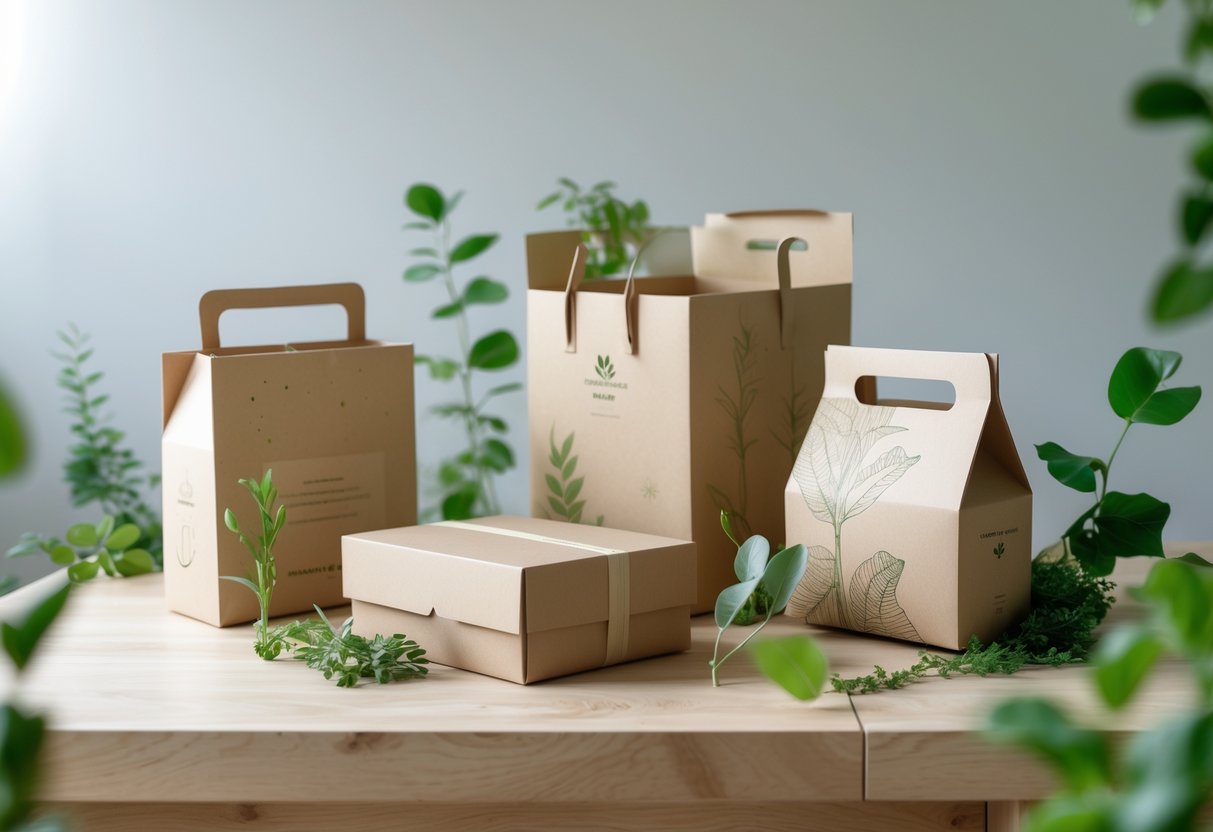
Sustainable packaging can be customized to fit a brand’s style while still being eco-friendly. It allows brands to communicate their values clearly through materials and visual design. Choosing the right printing methods and inks is key to keeping the packaging green without losing appeal.
Eco-Conscious Printing Techniques
Eco-conscious printing uses methods that reduce waste and avoid harmful chemicals. Digital printing is popular because it uses less ink and energy compared to traditional screen printing. It also supports short print runs, which helps avoid excess inventory and waste.
Other techniques include water-based printing, which replaces solvent-based inks with safer water solutions. This method lowers the use of volatile organic compounds (VOCs) that can harm the environment and workers. Brands can also use embossing or debossing, which add texture without using extra ink.
These printing techniques help maintain vivid branding while minimizing environmental impact. They give brands control over design while ensuring sustainability is part of the packaging process.
Sustainable Inks and Finishes
Sustainable inks are made from renewable resources like vegetable oils or soy. These inks break down more easily and release fewer toxins during production and disposal than petroleum-based inks.
Finishes like matte or gloss coatings can be applied using water-based or UV-cured finishes. Water-based finishes use less energy and are less toxic, while UV-cured finishes dry quickly and reduce chemical waste. Both options avoid traditional plastic laminates that create recycling challenges.
Brands should pick inks and finishes that match their sustainability goals, ensuring the final product supports recycling or composting. They balance durability and appearance while keeping the packaging eco-friendly.
Benefits of Going Green With Apparel Packaging
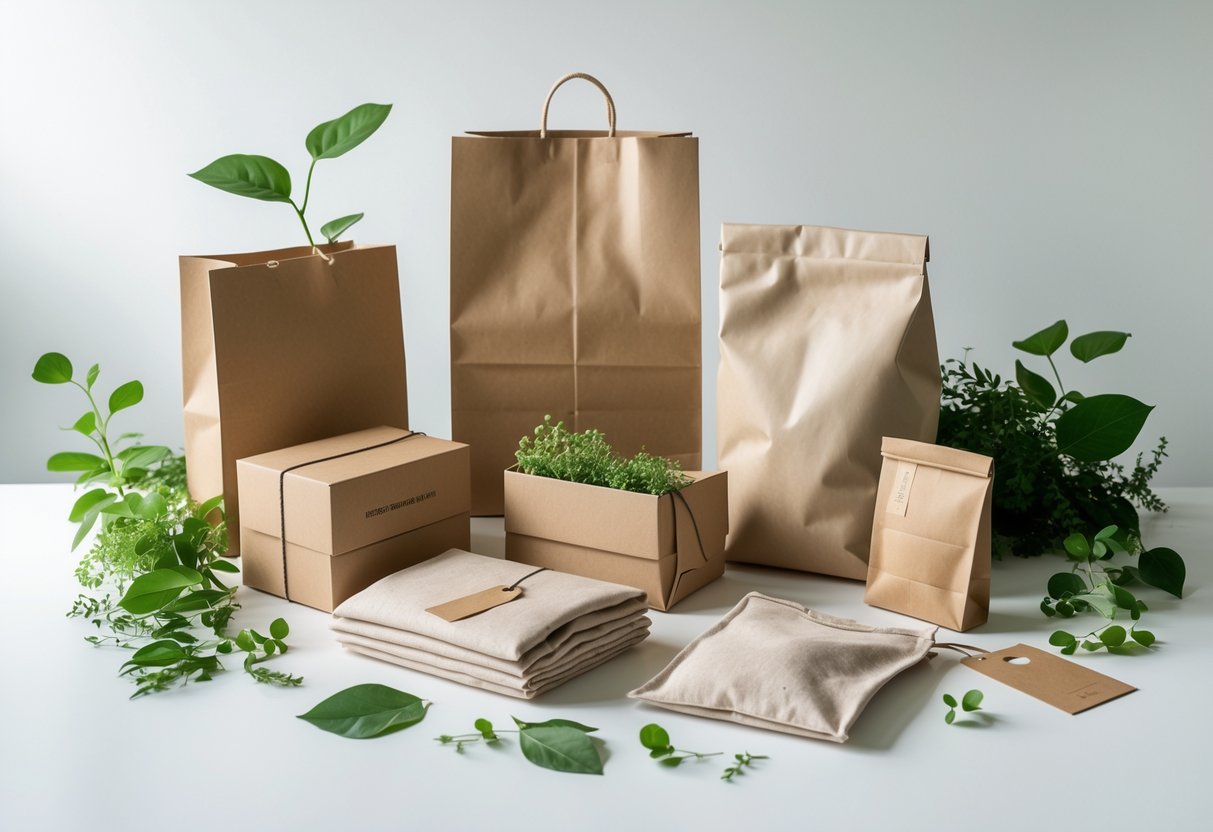
Switching to eco-friendly packaging reduces environmental impact, improves customer trust, and supports waste reduction systems. These benefits create value for both brands and consumers in today’s fashion market.
Reducing Carbon Footprint in Fashion
Eco-friendly packaging helps lower carbon emissions by using materials that require less energy to produce. Recycled cardboard, compostable mailers, and biodegradable plastics reduce reliance on fossil fuels compared to conventional plastic packaging.
Using materials that break down naturally also limits landfill buildup and pollution. When brands choose packaging that dissolves in water or composts easily, it minimizes harmful waste. This approach supports cleaner production and transport processes, which cuts overall greenhouse gases.
Enhancing Brand Perception and Loyalty
Consumers increasingly support brands with sustainable practices. Seventy percent of shoppers say they would pay more for products with eco-friendly packaging. This willingness shows how packaging influences buying decisions and brand loyalty.
By using recycled or compostable materials, brands demonstrate responsibility and stand out in a crowded market. Clear communication about sustainable packaging builds trust and enhances the brand’s reputation. It encourages repeat purchases and strengthens the emotional connection customers feel with the company.
Supporting the Circular Economy
Sustainable packaging fits into the circular economy by encouraging reuse, recycling, and composting. Materials like recycled cardboard and fabric bags can be repurposed or safely returned to the environment, reducing waste creation.
This approach closes the loop in product lifecycles. Instead of single-use packaging ending in landfills, clothing brands help create systems where resources are kept in use longer. Supporting these cycles fosters a more sustainable industry overall and meets rising regulatory standards.
How to Transition to Sustainable Packaging for Clothing

Moving to sustainable packaging requires clear planning, choosing the right materials, and managing suppliers well. It also means overcoming common challenges like cost or supply issues with practical solutions.
Step-by-Step Implementation Strategies
First, brands should assess their current packaging to find areas for improvement. They need to research eco-friendly materials such as recycled cardboard, biodegradable plastics, or paper-based mailers.
Next, they should test these materials on a small scale to check quality and customer response. After testing, it’s important to train staff on new packaging processes and update any design elements to fit the new materials.
Finally, brands should monitor waste reduction and cost savings continuously, adjusting strategies as needed to improve efficiency and sustainability.
Common Challenges and Solutions
One challenge is higher upfront costs for sustainable materials. To address this, brands can gradually shift packaging or negotiate bulk pricing with suppliers.
Sourcing consistent eco-friendly materials can be tricky. Maintaining close communication with suppliers and looking for local options helps secure supplies.
Another issue is customer acceptance. Clear labeling and marketing about the benefits of sustainable packaging can improve consumer support and reduce confusion.
Supplier Selection and Management
Choosing the right supplier is critical. Brands should look for suppliers who specialize in sustainable materials and have certifications proving environmental compliance.
They must assess suppliers based on price, material quality, delivery times, and flexibility to scale production.
Good management means setting clear expectations, regularly reviewing supplier performance, and maintaining open communication to address any issues quickly.
Building strong partnerships with suppliers ensures a smooth transition and ongoing access to sustainable materials.
Future Trends in Eco Packaging for Fashion
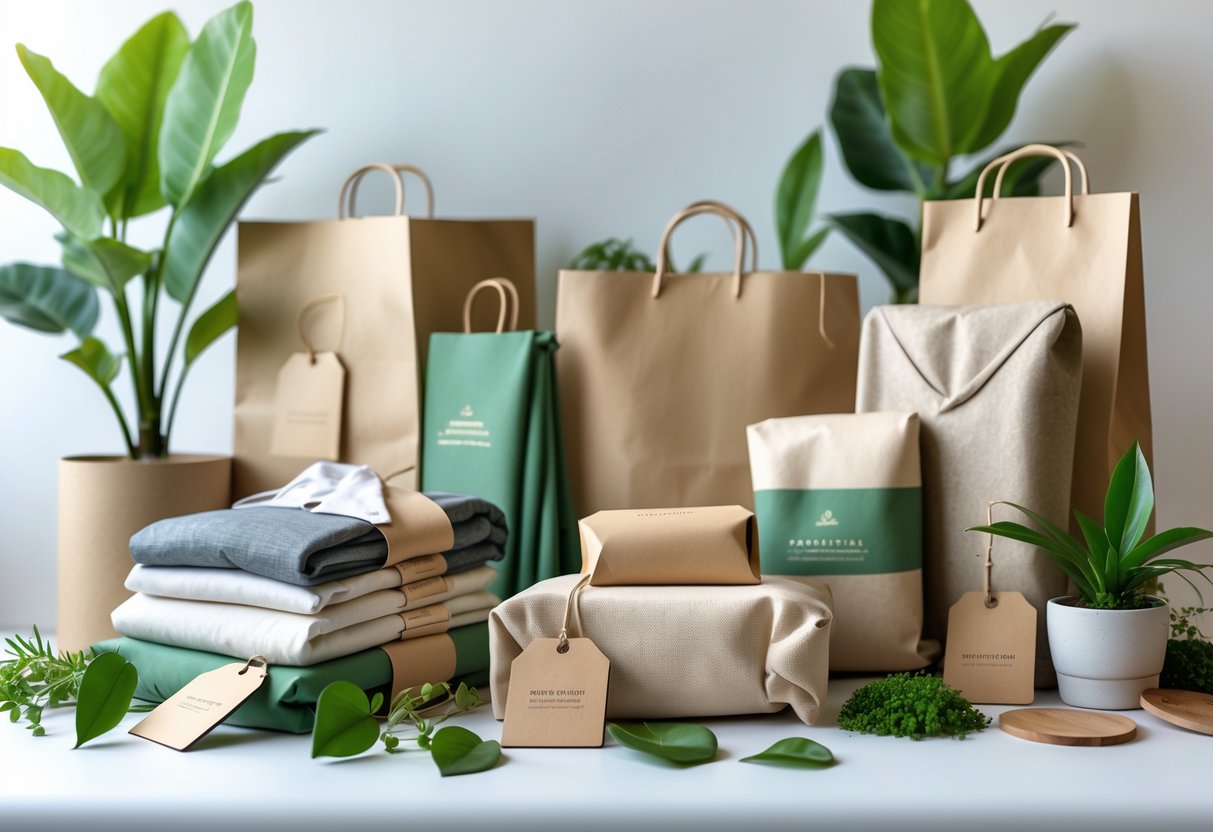
The fashion industry is moving toward smarter, more transparent packaging solutions. Advances in materials and technology will improve sustainability. At the same time, changing consumer habits and global supply challenges push brands to rethink how they manage eco packaging.
Technological Advancements
New technologies are enabling packaging that is both functional and eco-friendly. Companies focus on biodegradable materials that break down quickly without harming the environment.
Smart packaging with QR codes and embedded sensors lets brands share detailed recycling or reuse instructions with consumers. This tech helps increase recycling rates and reduces contamination in waste streams.
Innovations include compostable plastics made from plant fibers and recycled cardboard with enhanced durability. Some brands are experimenting with reusable packaging designed to return through circular systems, reducing single-use waste.
Advances in material science mean packaging is becoming lighter, which lowers shipping emissions. Improvements in printing also reduce the use of harmful inks and chemicals.
Consumer Expectations and Preferences
Consumers increasingly demand transparency about the impact of packaging choices. Many prefer brands that use clear labels explaining materials and environmental benefits.
Shoppers want packaging that is easy to recycle or compost at home. Convenience drives purchase decisions as much as the brand’s sustainability claims.
Eco-conscious buyers also favor minimal packaging designs that reduce waste. Brands offering reuse programs or packaging that can be repurposed see stronger customer loyalty.
Environmental values now influence brand image and buying habits widely. Brands that don’t adapt risk losing market share to those with clear green strategies.
Scaling Sustainability in Global Supply Chains
Fashion packaging must adapt to complex international supply chains. Sourcing sustainable materials globally can be difficult due to cost and varying regulations.
To scale eco packaging, companies are investing in local suppliers with sustainable certifications. This reduces carbon footprints from transportation and supports regional economies.
Standardizing packaging materials across factories makes it easier to recycle or upcycle waste. Some brands adopt modular packaging designs that fit multiple products, cutting down on resource use.
Supply chain transparency tools track the entire lifecycle of packaging materials. This helps brands verify claims and comply with stricter environmental laws worldwide.
Cooperation between designers, suppliers, and logistics teams is crucial for scaling sustainable packaging effectively without compromising quality or cost.
Conclusion

Sustainable packaging is a key step for clothing brands aiming to reduce their environmental impact. It involves using materials that are recyclable, biodegradable, or reusable. This change helps lower waste, pollution, and carbon emissions.
Brands benefit in several ways by choosing eco-friendly packaging:
- Cost savings through reduced material use
- Stronger brand image that appeals to conscious consumers
- Compliance with growing environmental regulations
Options like recycled paper, compostable mailers, and minimalist designs are practical solutions. These choices support a circular economy by encouraging reuse and reducing landfill waste.
For manufacturers, investing in sustainable packaging means thinking beyond just the product. It requires attention throughout the supply chain, from sourcing raw materials to packaging disposal.
By adopting these practices, clothing companies can meet consumer demand for greener products. They also contribute to a more responsible fashion industry. Sustainable packaging is not just a trend but an essential business strategy for the future.
Frequently Asked Questions
What materials are considered most sustainable for packaging clothing products?
Recycled cardboard is a common option. Biodegradable plastics break down naturally. Compostable mailers made from plant fibers are also used. These materials reduce pollution compared to traditional plastics.
How can small businesses implement eco-friendly packaging effectively?
Small businesses should focus on minimal packaging and reusable designs. Choosing local suppliers helps cut carbon emissions. Starting with recyclable mailers or boxes is an easy first step. Clear labeling about eco-friendly materials helps customers understand the effort.
Can you provide examples of successful eco-friendly packaging in the fashion industry?
Some brands use recycled paper and cardboard boxes. Others offer compostable bags or reusable cloth pouches. These choices help reduce landfill waste and appeal to eco-conscious buyers. Brands often share their packaging choices to build trust.
What are the environmental benefits of using eco-friendly packaging for clothing items?
Eco-friendly packaging reduces plastic pollution. It lowers carbon emissions in production and disposal. Using renewable materials helps conserve natural resources. This approach also reduces landfill waste and ocean pollution.
How do eco-friendly packaging practices differ for clothing versus food products?
Clothing packaging focuses on durability and reusability since the items are dry and less perishable. Food packaging must prioritize freshness and hygiene while also being eco-friendly. Materials for clothing packaging often allow for harder or thicker protection.
Where can businesses source wholesale eco-friendly packaging for their clothing lines?
Wholesale suppliers offer recycled cardboard and compostable mailers. Some specialize in sustainable packaging for apparel brands. Many businesses find options through online marketplaces that focus on green products. It’s best to compare suppliers based on price, materials, and certifications.


